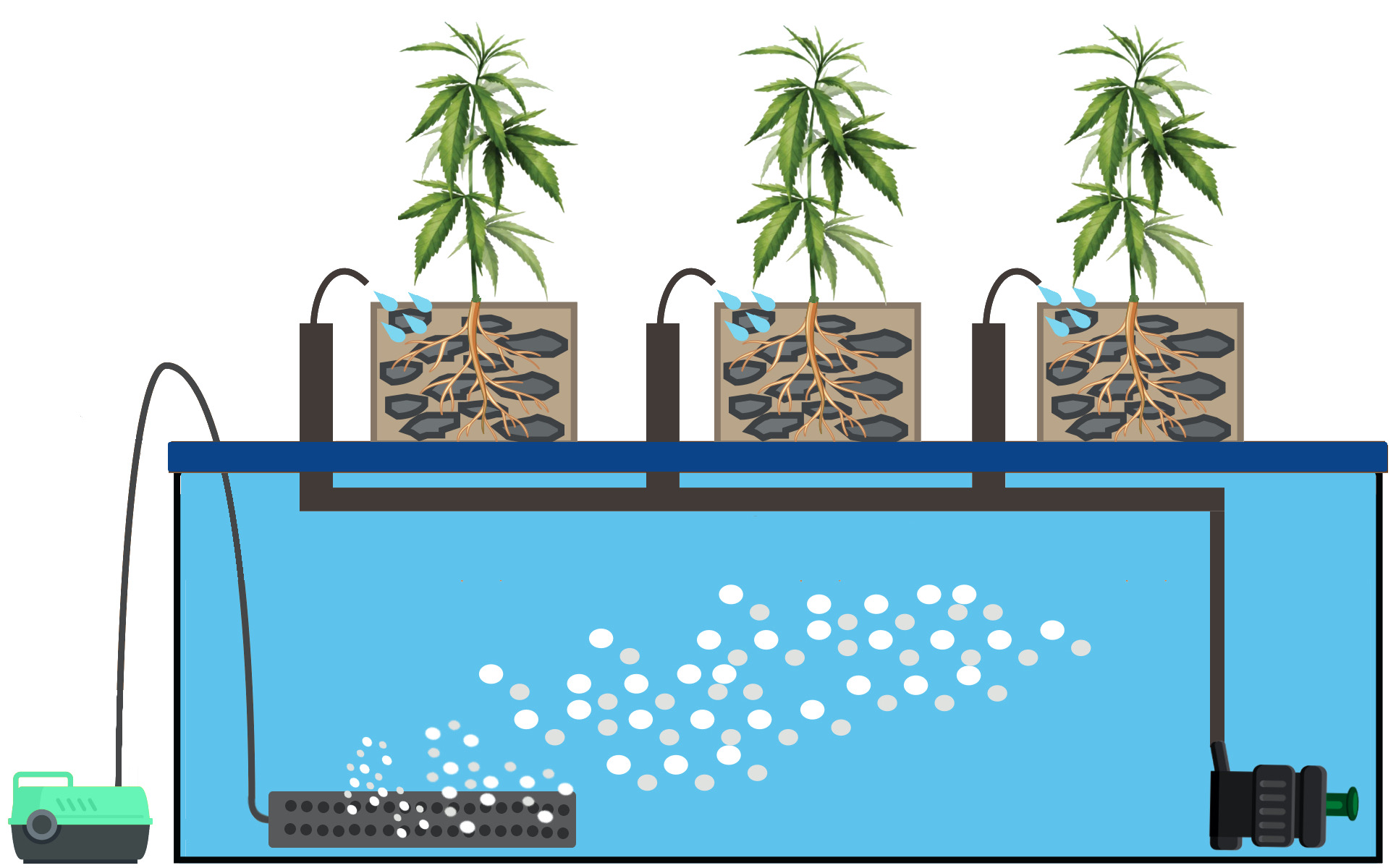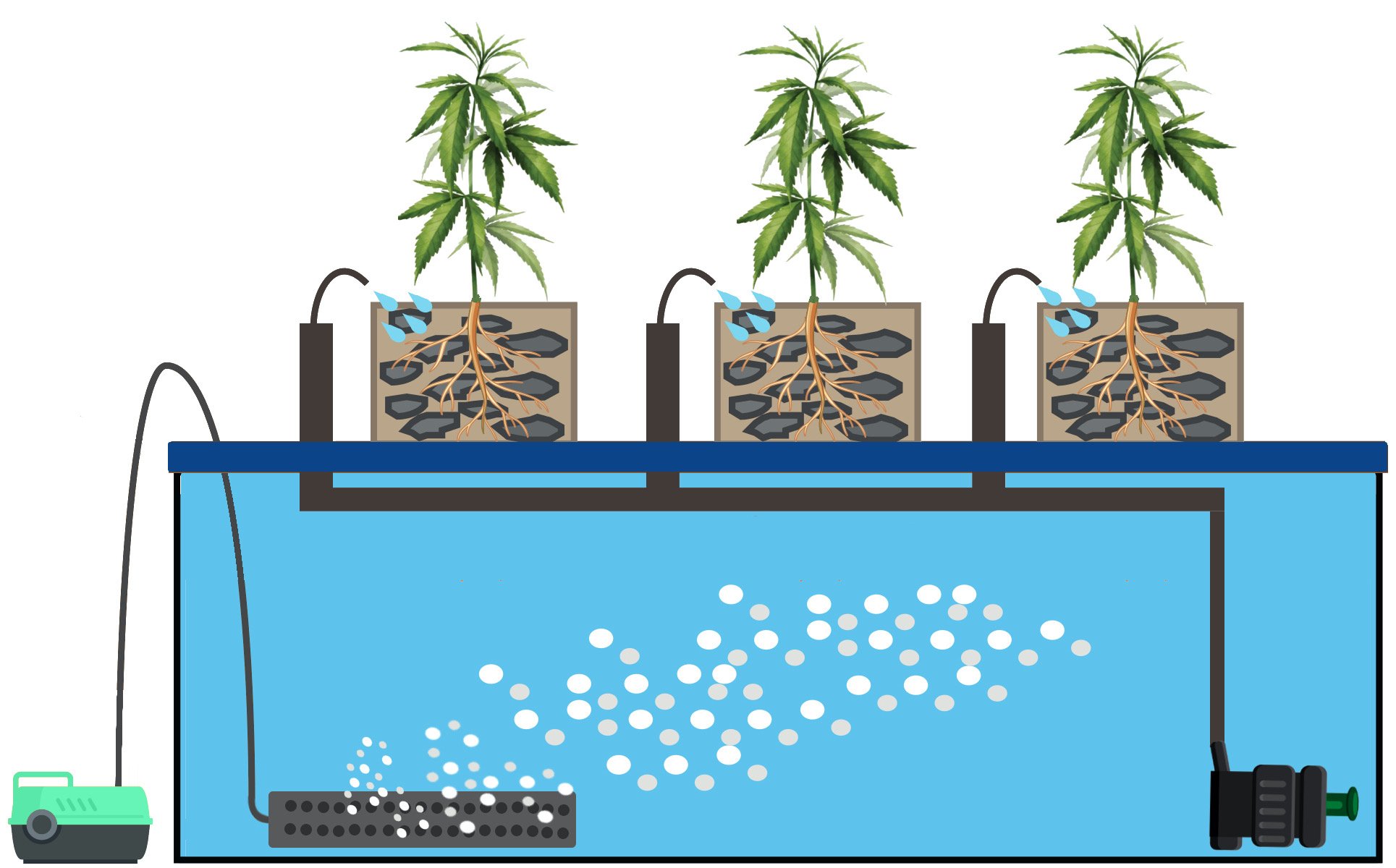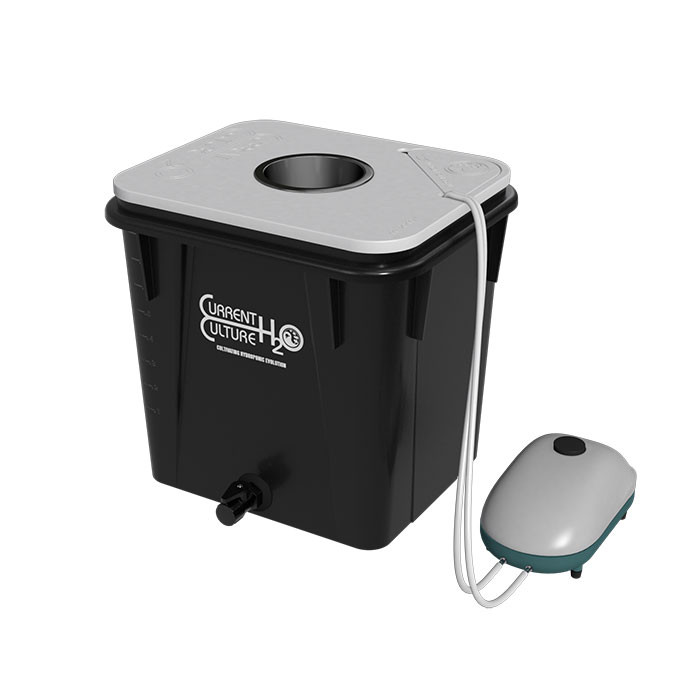What is Drip Irrigation?
Drip irrigation is a successful hydroponic technique that relies on a regulated flow of nutrient solution, top fed to your plants. It is not just for hydro though, many soil based systems also use drip irrigation techniques to feed their plants.
Drip irrigation is an efficient system with very little wastage. Growers who use DWC systems or NFT systems will know that they need to deliver large quantities of nutrient solution to their plants which, once spent, goes to waste. If you have a garden then this excess solution can be recycled on your other plants. However, in most cases it just goes down the sink which is not environmentally friendly. Drip irrigation systems slowly release just the right amount of nutrient solution that your plant requires, thus saving water and wastage. There is no need to periodically empty away tanks of solution to replace them with fresh ones.
For some people this water efficiency may not be important, but for those of you living in dry areas where water is at a premium, the water efficiency of drip irrigation systems could be a deciding factor.
Why Use Drip Irrigation?
- Drip irrigation is a low maintenance system that only has a few parts that can go wrong;
- Drip irrigation is efficient with water and nutrients;
- Drip irrigation is effective and more productive than soil only systems;
- Drip irrigation is easy to set up and can be done on a tight budget;
- We recommend drip irrigation systems for both beginners and advanced hydroponic growers.
- Drip irrigation is one of the simplest of the hydroponic methods and one that is often used in conjunction with other systems to create superponics systems. Many commercially produced grow boxes, such as the Superflower use Superponics systems.
How Does Drip Irrigation Work?
Drip irrigation is a great way to get the perfect amount of nutrient solution to your plants. Using tubing, the nutrient solution is delivered directly to an emitter which slowly releases the solution into the growing media. The most commonly used growing media for this system are expanded clay pellets, Rockwool, or other inert hydroponic media. In most home grows, a recirculating system is used, which avoids any excess nutrient solution going straight to waste. Soilless mixes of coco and peat moss, and soil based systems can be set up with no runoff and a big enough reservoir to avoid regular maintenance. With drip irrigation, you can get an efficient and hassle-free way to ensure your plants are getting the nutrients they need.

Some soil systems also use drip irrigation to feed the plants, like this outdoor set up.
To get the solution flowing in a drip irrigation system it needs to be under pressure. This can be achieved by either a gravity feed or by using a water pump. The reservoir may be remote from the growing area or may be self contained, as in the ‘bucket’ type systems (see below). In these systems the solution run-off is simply pumped back up to the reservoir from below. The flow from a drip irrigation system will require timers to regulate it and allow the growing medium time to breathe between flows. Normally timers are set to come on 2 – 4 times daily.
Current Culture Under Current Solo 8 Gallon
Single Module Deep Water Culture (DWC) System
The SOLO Single Module Water Culture System is great for hydro beginners and mother plants. It’s available in both 8 and 13-gallon module sizes with interchangeable CCH2O Lid options. The UC Solo is easy to setup and maintain, start growing trees!
The Under Current® features the patented Sub-Current Culture® circulation method. This high-performance water culture system is unmatched in efficiency, layout versatility and ease of use. The Under Current® utilizes negative water pressure to recirculate oxygenated nutrient solution through the plant’s root zone ensuring pH and EC levels are uniform throughout the entire system.
- Self-Watering, Gravity-Fed System for Grow Tents and Hydroponics
As with all AutoPot Watering Systems, XXL operates power-free, without the need for running water, and without pumps or computers to maintain. Immense savings in time, money, and ecology are obvious merits. Such virtues are equaled only by the responsiveness with which plants are fed and watered. The AQUAvalve5s that regulate every module respond exactly to each individual plant’s needs, supplying water and nutrient solution only as and when required, without recirculation or a drop of waste.
Hydrofarm MGSYS Hydroponic Megagarden Ebb & Flow System in a 22" x 22" x 10" size Container,Black
- Get the convenience of an Ebb & Flow System in a 22" x 22" x10" size garden
- Includes fired-clay and pebble grow media; 7-1/2-gallon reservoir, water level indicator
- Includes fifteen 5-inch, plastic grow pots can be filled with soil, or included fired-clay pebble grow media
- Submersible pump and timer for automatic flood and drain irrigation
- Also features seed starter cubes, nutrients and a pH test kit
Construct Your Own Drip Irrigation System
There are many ways to construct a hydroponic drip irrigation system. As with all systems it is important to understand the concept and then use your own innovation. When building your own drip irrigation system you will need the following:
- Emitters – You will need one emitter for each plant. There is a wide range of emitters available inexpensively from hydroponic stores and garden centers;
- Spaghetti Tubing – You will need one to fit each emitter. As above, widely available everywhere;
- Opaque Hose or PVC Tubing – Depending on how many plants you intend to run in your drip irrigation system you will require varying lengths and sizes of larger tubing to feed all your spaghetti tubing. Basically, the bigger the system the larger the hose required. Two inches is enough for most small home systems;
- Water Pump – You will need a water pump to move your solution around. Submersible fountain pumps are easy to get and will normally do the job. Most operate at around 300 gallons per hour and this is more than enough for domestic systems;
- Tray – Although it is possible to individually plumb in the run-off from each pot for return to the reservoir, the easiest way to do it is to have all of your pots in a large tray. Just add an outlet on the base of the tray and feed this into the top of the reservoir. By allowing the run off to ‘fall’ into the reservoir you can also add oxygen to the solution.
Step by Step – Bucket Drip Irrigation Systems
One of the advantages of a drip irrigation system is the ease with which you can add more plants to the system. It just requires another spaghetti tube and emitter. However it is really easy to build a stand-alone bucket system for your plants that will normally serve just one or two plants, depending on the size and shape of the bucket/tote that you use.
A bucket drip irrigation system basically works by growing your plant suspended in the lid of a bucket. A water pump pumps nutrient solution up from the bucket via a tube through the lid. The solution trickles over the plant’s roots and falls back into the bucket to be recirculated.
Follow these simple instructions to build your own self contained, single plant, drip irrigation system:
- ) Take a 5 gallon bucket with lid and drill a 4” hole in the centre of the lid;
- ) Drill a hole just a couple of inches down from the rim of the bucket that is big enough to pass through the flex (and plug if you don’t want to rewire it) of your water pump;
- ) Drill a 2” hole in the lid next to the 4” hole you have already drilled;
- ) Clean all dust and detritus from the bucket;
- ) Attach an 18” length of ½” tubing to the water pump;
- ) You will now need to reduce the size of the ½” tubing as this will be too big and will flood the plants.
- ) Attach a ½” to ¼” reducer to the open end of the tubing;
- ) Attach a 4” length of ¼” tubing to the reducer;
- ) Place the pump in the bottom of the bucket;
- ) Feed the power cable through the hole in the side;
- ) Feed the reducer and tubing through the smaller hole in the lid;
- ) Fit the lid to the bucket and push the tubing back into its hole so that the reducers sits flat on the top;
- ) Drop a 4” net cup into the 4” hole on the lid;
- ) Fill the net cup with expanded clay pellets;
- ) Use a clip to place the ¼ tubing so that it flows into the growing medium;
- ) Just add a plant and your nutrient solution and you are ready to plug it in and start growing hydroponically;
- ) Don’t forget to use a timer on your plug to run the pump for around 6 minutes, 3 times per day.
Operating a Drip Irrigation Hydroponic System
Once you have your timings dialled in and are happy that the system is working, drip irrigation is an extremely low maintenance system. Apart from occasional checking for clogged emitters the system can be left to run itself whilst you get on with other exciting stuff.
- Drip irrigation is easy to set up and suitable for beginners;
- Drip irrigation is efficient and ideal if you are on a budget or live in an area where water conservation is important;
- There are few parts to go wrong with drip irrigation;
- Watch out for clogged emitters.




